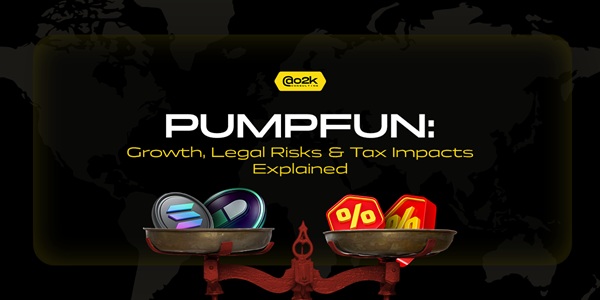Review of the Anti-Money Laundering Package (AMLD6 and AMLR)
In July 2019, after a series of money laundering scandals involving European Union institutions, the European Commission decided to review it’s anti-money laundering regulations by modifying and tweaking the existent EU Anti-Money Laundering/Countering the Financing of Terrorism (AML/CFT) regime that was active at the time. The framework was found to fall short of what was required and it was time for a reform. In line with this, the EU’s Security Union Strategy for 2020-2025 highlighted a need to improve the EU’s framework for combating money laundering and terrorist financing.
On 20th July 2022, the Commission adopted an anti-money laundering and countering the financing of terrorism (AML/CFT) legislative package. The package contains:
- a proposal for a Regulation on the prevention of the use of the financial system for the purposes of money laundering (ML) and terrorist financing (TF);
- a proposal for a Directive 5 establishing the mechanisms that Member States should put in place to prevent the use of the financial system for ML/TF purposes;
- a proposal for a Regulation creating an EU Authority for anti-money laundering and countering the financing of terrorism (‘AMLA’) , and
- a proposal for the recast of Regulation (EU) 2015/847 expanding traceability requirements to crypto-assets.

What is the AMLD6?
The AMLD6, essentially, is an update of Directive 2015/849/EU of the European Parliament and of the Council of 20 May 2015 on the prevention of the use of the financial system for the purposes of money laundering or terrorist financing. The 2015 Directive was already transposed into national law by 2020 but was patchy and and didn’t properly form a coherent body. Hence, there were cases that lacked legal clarity and some crimes couldn't formally be recognized by law.
The 6th AMLD addresses these issues by properly defining offences and security breaches, and their proper retribution. It also clearly defines and classifies as crimes the different methods of illegally acquiring goods and money.
Article 7, for example, focuses on corporate responsibility and identification. It holds a legal person responsible for lack of supervision and control when their (in)actions made the criminal act possible. The 6th Money Laundering Directive also includes higher penalties for ML offences, improved cooperation between EU states, holding legal persons responsible for crimes, and a higher number of activities considered criminal (from digital crimes to tax crimes). In fact, a total of 22 types of crimes have been established within the 6th AMLD.
Key Changes Instituted by the EU AML Package
- Linking the EU high-risk list to the FATF black list: The list of countries outside the EU considered as high-risk are to be integrated with the lists set by the standards of the Financial Action Task Force (FATF). The countries subject to increased monitoring and/or a call for action have been unified. Clients from these countries would be subject to increased standards and security measures.
- The creation of a central supervisory authority: A major change instituted by the AML package is the creation of a new Authority for Anti-Money Laundering and Countering the Financing of Terrorism (AMLA). The Authority is task to centrally coordinate the activities of national authorities and facilitate the development of consistent and uniform market practices. In addition, it will support the analysis of various national authorities and help improve the collection of financial information - essential material for law enforcement agencies. The AMLA will focus on:
- Introduction of an integrated AML/CFT regulatory regime across the EU, based on a common regulatory approach.
- Direct supervision of the highest risk financial institutions operating in EU Member States, or those that may require immediate action to limit AML/CFT risks.
- Supervision and coordination of the activities of national supervisory agencies responsible for financial and non-financial institutions.
- Promotion of national financial institutions cooperation with intelligence agencies to facilitate coordination of their efforts and joint analysis to improve detection of illicit cross-border financial flows.
- Unification of the AML Rulebook: The term "single AML rulebook" refers to the unification of the regulatory framework that serves to prevent money laundering and terrorist financing. This is achieved by introducing regulations that are applied directly and uniformly by the relevant bodies in all EU Member States. The rules based on the AML rulebook are more detailed and precise compared to the current regulations. The Anti-Money Laundering Rulebook is complemented by future regulatory technical standards issued by the AMLA, for example on the application of due diligence measures. Within such a framework, member states would still be able to respond to specific country-specific threats, e.g. by identifying other sectors requiring an AML/CFT regime on the national level.
- Supervision of obliged institutions: Previously, the role of overseeing cooperation between the relevant national supervisory authorities was performed by the European Banking Authority. With the enforcement of the AML6 Package, the AMLA will assume that responsibility. The AMLA will develop a comprehensive regulatory approach, including specific guidance, technical standards and recommendations, reflecting a risk-based approach. In turn, local regulators will be responsible for risk-based regulation. The frequency and content of inspections of obliged institutions depends on the institution's risk profile and the country's ML/TF risk type. Every year by 31 October, the national supervisory authority shall prepare an annual audit plan (Article 9 of the Regulation regarding AMLA) and submit it to the AMLA.

The AMLR Package and Crypto Assets
The 5th AMLD brought crypto assets, exchanges and custodian wallets under the legislation of the EU. This was required since centralized entities that enable the exchange of crypto assets for fiat currency and vice versa are in risk of being used for money laundering activities. Crypto exchanges and wallet providers were included on the 5AMLD’s list of “obligated” entities, and were compelled to perform customer due diligence checks and file suspicious activity reports (SARs). In keeping on with that, all key changes that were previously mentioned in this piece are also valid for crypto assets.
However, the presence of these laws does not make them easy to be complied with. There’s a power tug between transparency and anonymity, especially in cases of decentralized custody and transactions. The elements of the blockchain allow for user anonymity, which is an obstacle in the path of implementing KYC and AML regulations. Decentralized networks and transactions do not necessarily have any attachment to real-world identities. This makes it challenging to determine the person behind a payment or transaction and how one entity is connected to the other. A balance has to be struck between maintaining the anonymity of crypto users, while updating regulations as required.
As obligated entities, it’s essential that cryptocurrency exchanges and custodian wallet providers comply with 6AMLD. They need to prioritize developing an understanding of the AML directives. There should be a constant updating of knowledge to monitor new regulations, and to ascertain that they are in compliance with the latest regulatory requirements.
Lastly, it’s worthwhile mentioning that the AML6 package doesn’t make the Transfer of Funds Regulation (TFR) rules redundant. Both AML6 and TFR rules apply to European Union member states. Members of the Union have daily transactions with countries that are not in the EU and are not covered by EU law (AML6). In such transactions TFR is triggered and applicable. TFR was created to match the Financial Action Task Force requirements.
_____________
@O2K is in the process of creating an online course about international anti-money laundering and crime with crypto assets and we also plan to have a 2023 edition webinar on the topic. If you have suggestions about specific topics you would like us to focus on, please let us know using this short form.



















.jpeg)



























.jpg)





































